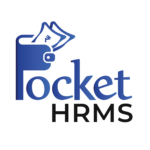Payroll software is used by almost all organizations in 2025. If you are on the edge about choosing the right solution for your specific payroll requirements, now is the right time to do it. Thanks to the addition of Artificial Intelligence into the ever-growing list of payroll system features, these systems can automate almost every aspect of payroll processing and disbursals.
So, what are the top features to look for while deploying payroll solution in your organization? What does the term ‘payroll software‘ actually mean? What are the steps to deploy it correctly? And what benefits does it have to implement a dedicated software for the payroll needs of your business? We will be answering these queries in this blog.
What is Payroll Software?
A payroll software automates the process of payroll processing from collecting attendance and leave data to undertaking calculations, removing deductions, and distributing payslips. As this system streamlines the entire payroll process, it provides enhanced transparency and handles compliance automatically, enabling HR teams to process employee salaries accurately.
Top Features of Payroll Software in 2025
In 2025, the rise of AI has led to a reevaluation of how any software accomplishes tasks, as the user’s expectations have changed. As a result, AI has become one of the top features for payroll software too, which provides the HR teams with increased automation options for their payroll process.
Hence, let us check out the top features every payroll solution must have in 2025:
1. AI-powered Payroll Processing
As mentioned earlier, AI has become the go-to feature for every software in 2025. The same holds true for payroll solution, as AI plays a major role in payroll processing. For example, companies can use Machine Learning to let the system learn their payroll patterns and use this information to capture any data entry errors in future payroll.
2. Automated Compliance Updates
Similarly, as modern payroll management software is deployed on the cloud, it is updated and patched by the software vendor. As a result, whenever there are any updates in the statutory rules and regulations, the vendor simply updates them within the software. On the other hand, the companies using these systems experience zero business interruptions as the system gets updated online seamlessly.
3. Flexible Salary Processing
Modern payroll systems also provide users with the option to process salaries for one employee, multiple employees, or even a selected group of employees, such as a specific designation or employees within a specific location. Such enhanced flexibility provides HR teams with complete control over their payroll process, enabling enhanced efficiency.
4. Custom Payments
Similarly, the latest payroll systems can also calculate payments for a specific duration, making it extremely easy for HRs to process payroll for any employee in between salary cycles. This flexibility to process payroll outside of standard salary cycles helps the HR teams to easily cover bonuses, salary corrections in the form of arrears, as well as terminations and associated F&F settlements.
5. Employee Self-Service Portal
In 2025, Employee Self-Service (ESS) portals have become the industry standard for enabling enhanced engagement. As a result, modern-day payroll system comes with dedicated online ESS portal and mobile apps to provide employees with easy access to their payroll information for increased transparency. Such portals enable seamless payslip downloads, simplified tax calculations, and help them understand any information related to their payroll without having to contact their HR.
6. Software Integrations
Since HR is a department that works closely with other departments in an organization, the payroll management software needs to do the same. Hence, modern payroll systems provide easy integration options with other commonly used software. For example, it is common to find payroll management systems that can integrate with attendance, leave, expense management, and even employee offboarding software for streamlined processing of employee salaries.
7. Custom Reporting
Payroll reports provide organizations with insights into company budget allocations and more. Additionally, some of these reports are regulated by statutory laws to ensure fair payroll practices and transparent payouts. Hence, modern payroll solutions provide custom reporting options along with handy templates for quick report generation.
8. Enhanced Security
Since the payroll software deals with confidential data related to employees and the organization, the data should be kept securely. Hence, modern payroll management systems follow secure encryption standards that encrypt and decrypt the database while being stored within the servers, as well as during transit. Additionally, with secure access controls in place, HRs can ensure that only authorized users gain access to relevant information.
9. Easy Scalability
As the organization grows in size, so does the complexity of payroll. Hence, modern payroll software scales according to business growth, providing additional options for different departments, as well as accommodating multiple monthly inputs. Additionally, the addition of these options is seamless, helping the company avoid any business disruptions.
Also Read:
Importance of Payroll Solution in 2025
The importance of payroll software is evident by its popularity in modern organizations. Companies of all sizes, from startups to enterprises, are deploying payroll systems to automate and streamline their payroll operations.
Deploying payroll system is essential in 2025, as it provides:
- Improved Accuracy: Payroll systems calculate employee payroll based on well-defined formulae, ensuring complete accuracy as there are zero chances of manual errors.
- Better Efficiency: It also results in improved efficiency, since almost all tasks associated with payroll processing are undertaken automatically with little to no input from the user.
- Automated Compliance: Similarly, as most of these systems are online, they stay up to date with the latest changes in compliance.
- Employee Satisfaction: Payroll systems also help improve employee satisfaction as they enable accurate, on-time salary disbursals every salary cycle.
- Scalability: These systems also provide enhanced scalability, as the payroll calculations become increasingly complex with company growth and the addition of departments.
Choosing the Right Payroll Software
While choosing the right payroll software is a relatively simple process, care should be taken to ensure that it satisfies all of your organizational requirements while staying intuitive for your employees. Hence, payroll software providers share free trials and demos, which help you experience their features firsthand.
The following are the simplified steps to choose the right payroll software for your organization:
1. Assess your Requirements
The first step is to evaluate your company’s business requirements and understand the unique challenges that the HR team is facing while processing employee payroll. Having a robust idea of HR needs enables you to generate a list of software features that will help resolve these challenges. You can cross-verify this list with the payroll software available in the market to shortlist the right ones for your organization.
2. Evaluate Available Options
As explained above, the next step is to evaluate the payroll software available in the market and cross-check its features with the ones that you require. While evaluating, you should also check what kind of integrations the software provides, as it will help you minimize data entries and, hence, the possibility of errors.
3. Compare Scalability & Flexibility
Once you have checked out the available features and integration capabilities, you should also evaluate the flexibility and scalability of the system. Since implementing a payroll system is a time-consuming and difficult process, you should check how scalable it is as well as verify whether the software vendor is able to accommodate your unique requirements.
4. Deploy for Test User Base
Once you have finalized your software vendor, deploy the system for a limited user base within your organization. You should ensure that this set of users comprises a wide range of employees who will be using the software daily. Once they spend a few weeks with the software, you can gather their feedback to understand what is working well and what needs to be changed.
5. Gather Feedback
The next step is to deploy the payroll system within your company. Once deployed, you should gather regular feedback from your employees to understand how the system can be improved further. Having a good knowledge of what issues they are facing daily will enable you to suggest changes to your software vendor, which will improve the functionality of your payroll software.
Conclusion
Payroll systems have become one of the most essential pieces of software for any organization, regardless of its size and complexity. Having a robust system vastly improves your payroll processing efficiency by avoiding manual errors and automating related compliances. Hence, you should ensure that the payroll software you deploy provides all the features we have listed in this blog, providing you with a completely automated payroll management experience.









